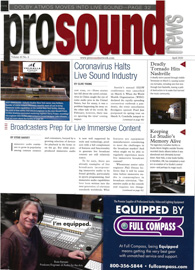BY RUSS LONG
MAR 27, 2020

The PhantomFocus System has evolved into a portfolio of physical studio designs and products that hold their ground against anything in the world today.
You’d be hard pressed to find anyone more passionate about audio than Carl Tatz. Not only is he serious about it, he knows it inside out. I got to know him before Recording Arts, his legendary Nashville studio, wound up in the hands of Sheryl Crow nearly two decades ago. Even in those days, more than anything else, Recording Arts was known for its exceptional monitoring. The fundamentals of the PhantomFocus System (PFS) were developed during Tatz’s Recording Arts tenure. That system has evolved into a portfolio of both physical studio designs and products that hold their ground against anything in the world today. The number of top engineers around the world who use Tatz’s talents to ensure their mixes accurately translate anywhere—be it streaming, on television or in movie theaters— continues to grow every year.
While Tatz often designs recording studios from the ground up, the PFS branding includes various pieces of hardware that are configured and “tuned” by his process, which combines physical properties, hardware design and system settings. Tatz can be hired to build a PFS studio from the ground up, but an existing studio can also bring him in to transform the facility into a PFS space through the integration of specific hardware that he configures via a combination of physics, software and his golden ears.




